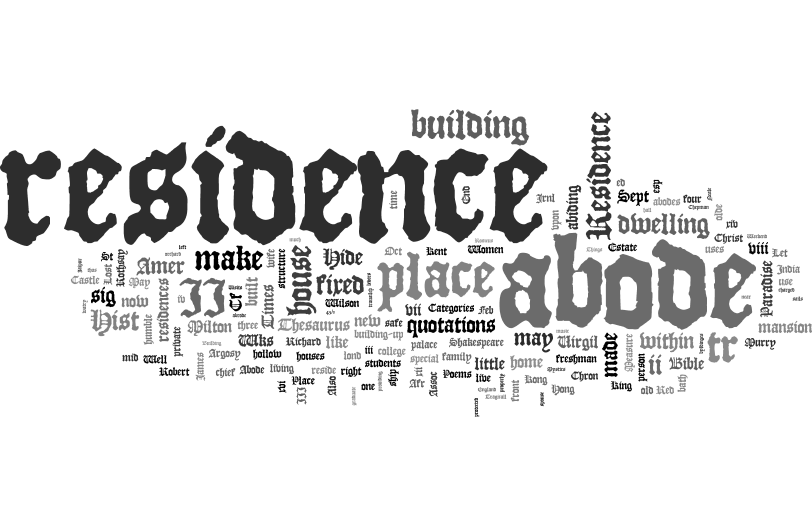Distributional Semantics I: What might distribution tell us about word meaning?
In a previous post, I asked ‘What is the link between corpus data showing lexical usage, on the one hand, and lexical semantics or concepts, on the other?’ In this post, I’d like to forward that discussion by addressing one component of it: how we observe lexical semantics (or word meaning) via distributional data in texts. That is, how do we know what we know about semantics from distributional data?
Linguists use proximity data from corpora to analyse everything from social implications of discourse, to politeness in pragmatics, to synonymy and hyponymy. Such data is also used by researchers in statistical natural language processing (NLP) for information retrieval, topic identification, and machine learning, among other things. Different researchers tend to use such data towards different ends: for some NLP researchers, it is enough to engineer a tool that produces satisfactory outputs, regardless of its implications for linguistic theory. For sociolinguists and discourse analysts, the process is often one of identifying social or behavioural trends as represented in language use (cf. Baker et al. 2013, Baker 2006). Despite the popularity of studies into meaning and corpora, the question of precisely what sorts of meaning can or can’t be indicated by such data remains remarkably under-discussed.
So, what aspects of meaning, and of word meaning in particular, might be indicated by proximity data?
Many introductory books on corpus semantics would seem to suggest that if you want to know what kinds of word meaning can be indicated by proximity data and distributional patterns, examining a list of co-occurring words, or words that occur in similar contexts, is a good start. Often, the next step (according to the same books) is to look closely at the words in context, and then to perform a statistical analysis on the set of co-occurrences. The problem arises in the last step. All too often, the results are interpreted impressionistically: which significant co-occurrences are readily interpretable in relation to your research questions? You may see some fascinating and impressive things, or you may not, and it’s too easy to disregard outputs that don’t seem relevant on the surface.
An operation like that described above lacks rigour in multiple ways. To disregard outputs that aren’t obviously relevant is to ignore what is likely to be some of the most valuable information in any corpus study (or in any scientific experiment). In addition, the method skips the important step of accounting for the precise elements of meaning in question, and how (or indeed whether) those elements might be observed in the outputs.
In Early Modern English, an analysis of proximity data might (hypothetically) show a significant similarity between the terms abode and residence. Such pairs are straightforward and exciting: we can readily see that we have automatically identified near-synonyms.
Often, researchers are looking to identify synonymy. But that’s not all: researchers might also be after hyponymy, co-hyponymy, antonymy, meronymy, auto-hyponymy, polysemy, or conceptual or discursive relations). In addition, as Geeraerts (2010: 178) points out, we might want to find out specific details about what a noun referent looks like, for example. Can we retrieve any of that information (reliably or consistently) from distributional data, i.e. from co-occurrences in texts?
Examples like abode and residence aren’t the norm. We also see examples like build and residence. What is the meaning relation here? Action and undergoer? A conceptual field related to building residences? Something else entirely?
And what about other pairs of terms with no clear semantic relation whatsoever? Do we disregard them? Impressionistically, it’s easy to pick out the instances of synonymy, or even relationships like Action/Undergoer or Agent/Patient, and to ignore the huge number of semantically unrelated collocates (or collocates with less obvious relations). But that’s not a terribly rigorous method.
By definition, we know that in proximity data, we are observing words that co-occur. Which leaves us to test what kinds of semantic relations are actually indicated, quantitatively, by co-occurrence. This moves us from the vague statement that words are known by the company they keep, towards a scientific account of the relationship between co-occurrence and semantic relations. In the next post (coming soon), I report on exactly that.
References
Baker, P. (2006) Using Corpora in Discourse Analysis. London: Continuum.
Baker, P. Gabrielatos, C. and McEnery. T. (2013) Discourse Analysis and Media Attitudes: The Representation of Islam in the British Press. Cambridge: Cambridge University Press
Geeraerts, Dirk. 2010. Theories of Lexical Semantics. Oxford: Oxford University Press.



